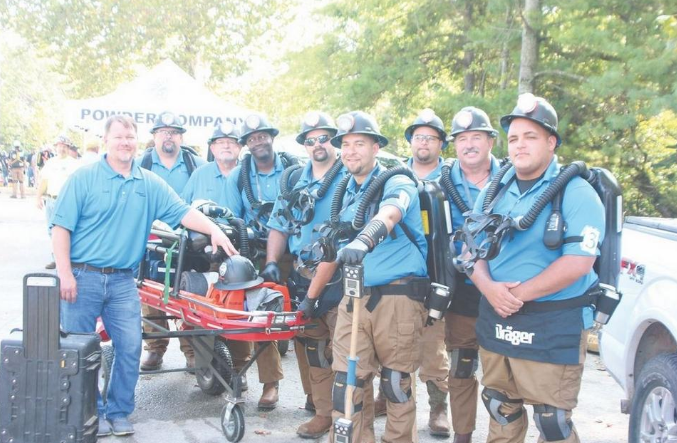Missouri Labor Leader Impressed With Missouri S&T's Mine Competition

By Eddie O'Neill
September 25, 2017 - The director of the Missouri Department of Labor and Industrial Relations, Anna Hui, spent Tuesday morning in Rolla at Missouri University of Science and Technology’s Experimental Mine. She was in town to observe the 35th annual Mine Rescue Competition, and she liked what she saw.
“Its good to see industry knowledge put into action,” said Hui who was sworn in as the director in April by Missouri Gov. Eric Greitens. “Its easy for us as government regulators to sit in our offices and pass rules and laws, but we also need to be out in the field and see how they affect real people and work environments.”
This was Hui’s first visit to a competition. She explained that in Missouri, mining is an eight billion dollar industry. Much of it occurs in the southern-part of the state where a high-grade-calcium limestone is prevalent.
This week’s four-day event had more than 20 mine-rescue teams from around the nation participating. Missouri S&T had two student teams competing against a myriad of professional mining-industry groups. The competition consisted of a written skill test as well as several hands-on simulated underground mine disasters and other specialty-skill testing. Officials from the U.S. Department of Labor’s Mine Safety and Health Administration and representatives from the Missouri Department of Labor Cave and Mine Safety, served as judges for the event.
This was Compass Minerals (of Lake Iberia, La.), second visit to Rolla and the competition.
“This is the real thing,” noted team spokesman Paul Boutte. ” Back home we do not have a real mine we can actually drill and practice in.“
Hui agreed that the university’s mine provides an optimal place to practice and compete.
She said “The more real we can make a rescue scenario, the better off we are going to be. With a rescue situation, the last thing you want to do is to figure out what to do in the midst of an emergency. Competitions and exercises like this allow for teams to drill, so that when an emergency comes, it’s just second nature on how to respond.“
With teams from as far away as Alaska and as nearby as St. Louis, Hui noted that this diversity allows teams to learn from each other. As well, teams represented various types of mining from above-ground operations to underground mining.
“A team can see how another team handles a situation, and perhaps they can adopt some of those practices into their own protocol,” she stated.
Les Thomas, assistant director of Missouri’s labor standards, told The Rolla Daily News that on average, the state’s mining industry averages two fatalities per year.
“Thankfully, it’s been more than three years since the mining industry here has had a fatality,” he related.
He explained that a mine-rescue team is a volunteer job within a mining operation. All members work in the mine basis and then regularly train as a rescue group.
“A team typically has seven members from a gas man, first-aid assistants, to someone running a base camp monitoring what’s happening inside,” said Thomas who worked in underground mining for around 17 years.
He added that most mining injuries and deaths these days are related to moving equipment and falling rock.
That’s why safety is key,” concluded Hui. “Its great to see all these professionals out here testing their know-how both on paper and in practice. We want to be prepared for something we hope will never happen.”

Members of the Compass Minerals Mine Rescue Team take a pause in the action on Tuesday at Missouri S&T's Experimental Mine.

